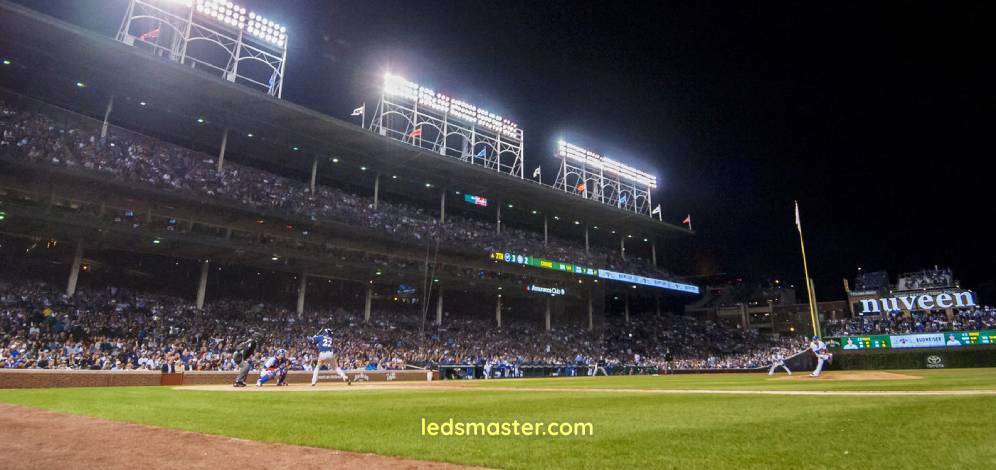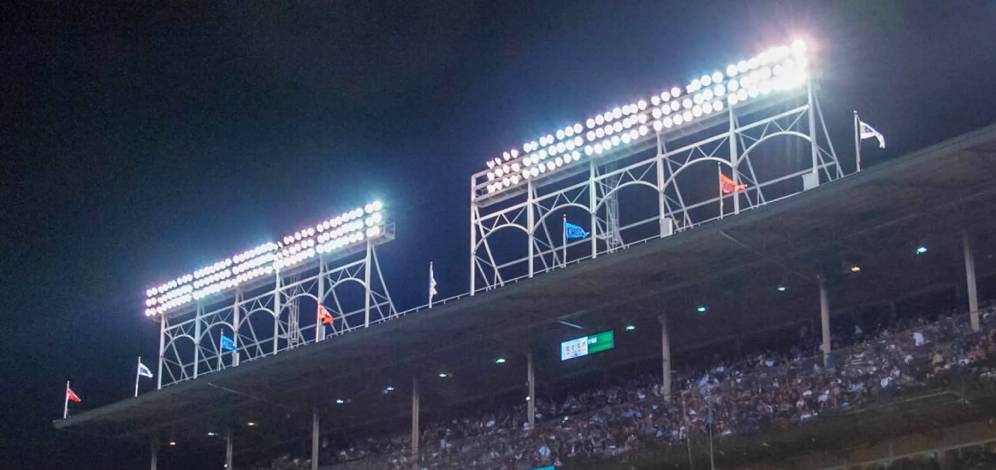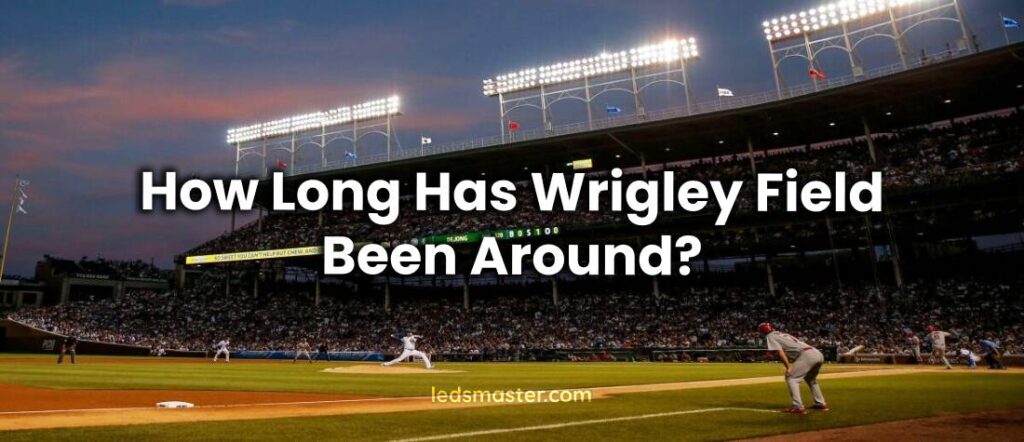Wrigley Field, an iconic symbol of American baseball, stands as one of the oldest and most revered sports venues in the United States. Since its opening in 1914, Wrigley Field has witnessed countless historic moments, unforgettable games, and has become an integral part of Chicago’s cultural fabric. This article delves into the rich history of Wrigley Field, tracing its origins, highlighting major events, renovations, and celebrating the classic games that have etched this ballpark into the annals of sports history.
Table of Contents
ToggleThe Origins of Wrigley Field
The Birth of a Baseball Icon
Wrigley Field’s story begins in 1914 when it was originally constructed as Weeghman Park for the Chicago Whales of the Federal League, a short-lived rival to Major League Baseball. The ballpark was designed by architect Zachary Taylor Davis, who also had a hand in designing Comiskey Park, another of Chicago’s famed stadiums. Located in the Lakeview neighborhood on the North Side of Chicago, the site was chosen for its accessibility and the growing popularity of baseball in the area.
On April 23, 1914, the first game at Weeghman Park took place, with the Chicago Whales defeating the Kansas City Packers. This marked the beginning of what would later become one of the most storied venues in sports. The Federal League, however, would only last two seasons before folding in 1915, leaving the future of Weeghman Park uncertain.
Transition to Wrigley Field
In 1916, Charles Weeghman, the owner of the Chicago Whales, purchased the Chicago Cubs, a National League team struggling with attendance and performance at their West Side Grounds. Weeghman decided to move the Cubs to his newly built ballpark, marking the beginning of the Cubs’ long and storied association with the field. By 1920, the park had been renamed Cubs Park, and in 1926, it was renamed Wrigley Field after William Wrigley Jr., the chewing gum magnate and majority owner of the Cubs. This name has since become synonymous with baseball tradition and the Chicago Cubs.

The Evolution of Wrigley Field
Early Years and Expansion
In its early years, Wrigley Field underwent several expansions and renovations to accommodate growing crowds and improve the overall experience for fans. In 1927, the upper deck was added, increasing the seating capacity to approximately 40,000. This was followed by the construction of the famous hand-operated scoreboard in 1937, which remains one of the most recognizable features of Wrigley Field.
The same year also saw the installation of the iconic ivy-covered brick outfield walls. The ivy, which was planted under the direction of Bill Veeck, the Cubs’ General Manager at the time, has since become a beloved symbol of the ballpark. These additions helped solidify Wrigley Field’s reputation as a unique and charming venue, a stark contrast to the increasingly modern and corporate stadiums being built across the country.
The Lights Controversy and Night Games
For much of its history, Wrigley Field was known as the only Major League Baseball stadium without lights, meaning all games had to be played during the day. This gave rise to the term “The Friendly Confines,” as the daytime games created a family-friendly atmosphere that became part of the Wrigley Field experience.
However, as television revenue became increasingly important to baseball, the need for night games grew. After years of resistance from traditionalists and neighborhood residents, lights were finally installed at Wrigley Field in 1988. On August 8, 1988, the Cubs played their first official night game against the New York Mets, marking a new era in the ballpark’s history. Despite the initial controversy, night games have since become a regular part of the Cubs’ schedule, though day games remain a cherished tradition.
Major Renovations and Upgrades
The 1937 Renovation and the Bleacher Expansion
One of the most significant renovations in Wrigley Field’s history occurred in 1937. Under the guidance of Bill Veeck, the ballpark underwent a major transformation that included the construction of new bleachers and the aforementioned ivy-covered walls. The renovation not only increased the seating capacity but also improved sightlines and overall aesthetics. The famous “bleacher bums,” a dedicated group of fans known for their vocal support of the Cubs, found their home in these newly constructed bleachers.
The 1937 renovation also introduced the iconic center-field scoreboard, which, despite numerous technological advances, remains manually operated to this day. This scoreboard has become a symbol of Wrigley Field’s commitment to preserving the charm and tradition of baseball.
The Wrigley Field Restoration Project
By the turn of the 21st century, Wrigley Field had aged considerably, and the need for significant repairs and upgrades became apparent. In response, the Chicago Cubs launched the Wrigley Field Restoration Project, also known as “The 1060 Project,” in 2014. This multi-year, multi-phase renovation aimed to modernize the ballpark while preserving its historic character.
The restoration included structural repairs, expanded seating, new clubhouses, and updated amenities for fans. One of the most notable changes was the addition of new video boards in left and right field, a move that sparked some controversy among purists but ultimately provided much-needed revenue for the team.
The restoration also included improvements to the surrounding Wrigleyville neighborhood, enhancing the overall game-day experience. By the time the project was completed in 2019, Wrigley Field had been transformed into a modern sports venue while retaining the classic charm that fans had come to love.
Memorable Moments and Classic Games
The Cubs’ Historic Moments
Wrigley Field has been the setting for many of the Chicago Cubs’ most memorable moments, both triumphant and heartbreaking. One of the most iconic events in the ballpark’s history occurred on October 1, 1932, during Game 3 of the World Series between the Cubs and the New York Yankees. In that game, Babe Ruth allegedly “called his shot” by pointing to the center-field bleachers before hitting a home run off Cubs pitcher Charlie Root. While the accuracy of this story has been debated, it remains one of the most famous moments in baseball history.
Another unforgettable moment came in 1945 when the Cubs played in the World Series against the Detroit Tigers. It was during this series that the infamous “Curse of the Billy Goat” was supposedly placed on the team, a curse that many fans believed contributed to the Cubs’ 108-year championship drought. Despite the Cubs’ loss in 1945, the legend of the curse became a defining part of Wrigley Field’s lore.
The 2016 World Series and Breaking the Curse
The most significant moment in Wrigley Field’s history undoubtedly came in 2016 when the Cubs ended their 108-year World Series drought. The Cubs’ victory over the Cleveland Indians in a thrilling seven-game series was celebrated by millions of fans around the world, and Wrigley Field was at the heart of the celebrations.
The excitement reached a fever pitch during the World Series games held at Wrigley Field, particularly Game 5, when the Cubs faced elimination but managed to secure a crucial victory. The atmosphere in the ballpark was electric, with fans believing that they were finally witnessing the end of the curse. When the Cubs clinched the championship in Cleveland, the celebrations spilled over into Wrigleyville, with fans gathering outside the ballpark to revel in the historic achievement.
Highlights of Wrigley Field
The Friendly Confines
Wrigley Field’s nickname, “The Friendly Confines,” is a testament to the unique and welcoming atmosphere that has characterized the ballpark for over a century. The intimacy of the stadium, with its close proximity to the field and unobstructed sightlines, allows fans to feel like they are part of the action. This sense of connection between the fans and the game has made Wrigley Field a beloved venue not just for Cubs fans, but for baseball enthusiasts from around the world.
The Ivy-Covered Walls
The ivy-covered outfield walls are perhaps the most distinctive feature of Wrigley Field. Planted in 1937, the ivy serves as both a beautiful aesthetic feature and a challenging obstacle for outfielders. Unlike other ballparks where padded walls provide some cushion for outfielders chasing down fly balls, Wrigley’s ivy-covered brick walls can be unforgiving, making plays in the outfield particularly challenging. The ivy also has a practical impact on gameplay, as balls that get lost in the ivy are ruled ground-rule doubles, adding an element of unpredictability to games at Wrigley.
The Manual Scoreboard
In an era of digital displays and high-tech scoreboards, Wrigley Field’s manual scoreboard remains a beloved anachronism. Located above the center-field bleachers, the scoreboard is operated by hand, with attendants updating the scores and standings throughout the game. The scoreboard’s classic design and the tradition of manually updating the scores have made it a symbol of Wrigley Field’s dedication to preserving the timeless aspects of baseball.
The Rooftop Experience
Another unique aspect of Wrigley Field is the rooftop seating available on the buildings surrounding the ballpark. These rooftops have become a popular alternative for fans looking to enjoy a Cubs game from a different perspective. The rooftop experience offers a unique view of the field and has become an integral part of the Wrigley Field tradition. In recent years, the Cubs have reached agreements with many of the rooftop owners, ensuring that this experience remains a part of the ballpark’s charm.

Maintenance and Lighting at Wrigley Field
Routine Maintenance of Lighting Systems
The lighting at Wrigley Field is not only about keeping the field visible during games; it also involves preserving the historic aesthetic of the ballpark. The stadium’s lighting system includes both the modern floodlights that illuminate the playing field and the iconic marquee lights that greet fans as they arrive. To keep these lights functioning optimally, the maintenance team at Wrigley Field undertakes regular inspections and repairs.
Routine maintenance involves cleaning the fixtures to remove dust and debris that can accumulate and reduce brightness. Bulbs are replaced as needed, and the alignment of lights is checked to ensure even distribution of illumination across the field. These tasks are crucial for maintaining the quality of the lighting and preventing disruptions during games. Additionally, the team must be prepared to address any unexpected issues, such as power outages or technical malfunctions, which could affect the lighting during critical moments.
Upgrading and Preserving Historical Lighting Features
While modern upgrades have been made to the lighting systems at Wrigley Field, there is a strong commitment to preserving the historical elements that contribute to the ballpark’s charm. For instance, the famous red marquee, which has been a symbol of Wrigley Field since the 1930s, requires specialized maintenance. The bulbs in the marquee are carefully selected to match the original style, and the sign is regularly inspected to ensure it remains in pristine condition.
In addition to preserving historical elements, Wrigley Field has also implemented energy-efficient lighting solutions that reduce the stadium’s environmental impact while enhancing the overall fan experience. The installation of LED lights, for example, has improved the quality of illumination while also reducing energy consumption. These modern solutions are integrated with the existing infrastructure in a way that respects the ballpark’s history, ensuring that Wrigley Field remains both functional and authentic.
The Impact of Weather on Lighting Maintenance
Chicago’s variable weather, from harsh winters to humid summers, presents unique challenges for the maintenance of Wrigley Field’s lighting systems. Extreme temperatures, moisture, and wind can all affect the performance of outdoor lighting fixtures. To mitigate these challenges, the maintenance team uses weather-resistant materials and technologies designed to withstand the elements.
Regular checks are conducted before the start of each season to assess the impact of winter weather on the lighting systems. This includes inspecting for potential damage from snow and ice and ensuring that all fixtures are secure and functional. During the summer, when humidity and thunderstorms are common, the team monitors the lighting systems closely to address any issues caused by moisture or electrical surges.
Wrigley Field in Popular Culture
A Baseball Icon on Screen
Wrigley Field’s iconic status has made it a popular location for films, television shows, and commercials. The ballpark has appeared in numerous movies, including classics like The Blues Brothers (1980) and Ferris Bueller’s Day Off (1986). In these films, Wrigley Field is more than just a backdrop; it serves as a character in its own right, representing the spirit of Chicago and the enduring love for baseball.
The ballpark has also been featured in television shows, music videos, and even literature, further cementing its place in popular culture. The image of Wrigley Field, with its distinctive marquee and ivy-covered walls, has become synonymous with the sport of baseball itself.
The Role of Wrigley Field in Chicago’s Identity
Wrigley Field is more than just a baseball stadium; it is a cornerstone of Chicago’s identity. The ballpark’s presence in the Lakeview neighborhood, known as Wrigleyville, has helped shape the character of the area, making it a vibrant and lively part of the city. The neighborhood thrives on game days, with bars, restaurants, and shops filled with fans decked out in Cubs gear, creating an atmosphere that is both festive and communal.
The relationship between Wrigley Field and the city of Chicago is symbiotic. The ballpark is a source of pride for the city’s residents, and its long history is intertwined with Chicago’s own story. From the bustling streets of Wrigleyville to the die-hard Cubs fans who have passed their love of the team down through generations, Wrigley Field is an essential part of what makes Chicago unique.
Conclusion
Wrigley Field remains a cherished emblem of Chicago and American baseball, blending historic charm with modern amenities. From its early days as Weeghman Park to its current status as a cultural landmark, Wrigley Field has been meticulously maintained and thoughtfully upgraded to preserve its iconic features. Whether through the careful preservation of its historic lighting or the ongoing renovations that respect its legacy, Wrigley Field continues to offer an unparalleled experience for fans. As it evolves with the times, it retains the timeless essence that has made it a beloved venue for over a century.

